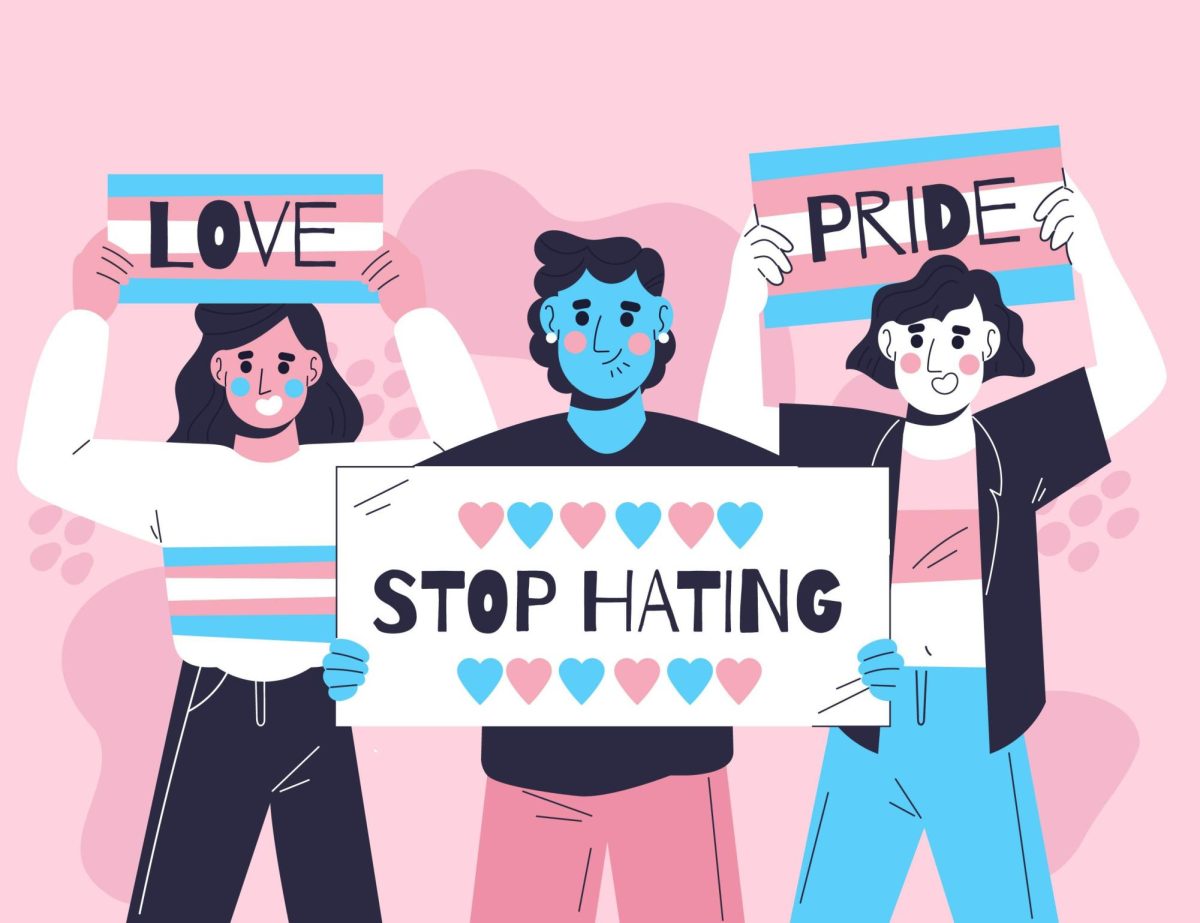
Lesbian history is being overshadowed in the efforts to recognize gay male rights. (Freepik)
Lesbians have been at the forefront of gay activism, especially with major historical events in LGBT history. From the AIDS crisis in the 1980s to the Stonewall Uprising and the legalization of gay marriage in the United States, information about the involvement of lesbians is difficult to find. As someone who is lesbian, it’s important for both lesbians and the gay community as a whole to recognize all that lesbians have done for the movement and the fight for gay liberation.
The AIDS crisis hit the gay community hard in the 1980s; gay and bisexual men were banned from donating blood to keep the illness away from the blood supply. Lesbians were the first to step in to give support instead of pity, while the U.S. government abandoned the men. The San Diego Blood Sisters, a lesbian organization, rose to host blood drives and worked with blood banks to make sure every last drop would go to sick HIV/AIDS patients.
Activism from Lesbians during the 80s didn’t just stop at blood; it went deeper through the use of art. Lesbians created artwork to represent lesbians also affected by the epidemic, and fought to have the definition of the illness represent women. Lesbians during that era created artwork that challenged the rise of homophobia, such as Gran Fury’s 1989 photo campaign, “Kissing Doesn’t Kill: Greed and Indifference Do”.
Lesbians played an integral part in gay activism and the preservation of community. But during the era of AIDS, lesbians were still treated as nuisances, and their stories weren’t heard. It’s still a common misconception that HIV is strictly a disease that affects gay and bisexual men, when many lesbians have been diagnosed and killed by the disease. The history of lesbians’ involvement in gay activism goes further in time.
Storme DeLarverie was a mixed black butch lesbian drag king and called herself the “guardian of the lesbians in The Village.” She watched over the streets of Greenwich Village with a gun to protect the lesbians and children in the area.
Eyewitness testimonies to the Stonewall uprising believe that Delarverie was the one to ignite it. On June 28, 1969, she was arrested for violating the three-piece clothing law in New York that made citizens wear at least three pieces of clothing that aligned with the gender roles for men and women. During the arrest, DeLarverie yelled for the crowd to fight back and punched an officer herself.
Despite Storme DeLarverie being the woman who started the uprising, her credit was given to Marsha P. Johnson, who was not there during the time of the riots and only became involved in the activism of the gay rights movement a year after the initial Stonewall uprising. If it weren’t for witness testimonies mentioning/bringing in the name Storme DeLarverie, we wouldn’t know her role/importance.
After the Stonewall uprising, gay activists took to the streets for liberation. Martha Shelley is a Jewish lesbian and feminist and was a prominent activist during the gay liberation movement in the 70s. After witnessing the uprising and public reaction, Martha was inspired to fight. With the help of the Daughters of Bilitis (DOB), she organized America’s first gay protest; shortly after, she formed the Gay Liberation Front.
More recently, lesbians helped with the fight to win same sex marriage in the United States. Mary Bonauto, a lesbian woman, was an attorney who fought against marriage inequality and bans against gay marriage. Bonauto helped cases for gay and lesbian couples who wanted to marry; such cases, like Baker v. State of Vermont, were appealed to the Vermont Supreme Court and ruled in the couples’ favor.
Despite the contributions lesbian women made during the ongoing fight for gay rights, gay men seem to have a lot of work to do regarding their issues with misogyny and attempts to separate themselves from lesbians.
Gay male communities have also had issues with casual misogyny directed at lesbians. Lesbians have been sidelined and disregarded, now not just from our straight patriarchal society, but by their own communities. With the normalization of calling women “bitches” and “fish”, along with other misogynistic insults, a standard was set for an environment that was covertly hostile.
This divide among gay men and lesbians, both in the past and present, caused lesbian women to distance themselves from general LGBT organizations and spaces to form their own paths. But these lesbian-led organizations often have issues with funding and collecting money when compared to gay men-focused organizations and broader LGBT ones.
Lesbians choosing to divide themselves from the broader LGBT community shouldn’t come as much of a shock, but more so a reaction to being shut out and having their contributions hidden from history. As a community, we need to do more for lesbians as they’re at the first letter of LGBT for a reason, not just for show. Cutting off the hand that feeds you and taking their work as your own will only disconnect you from the ones who want to help you the most.